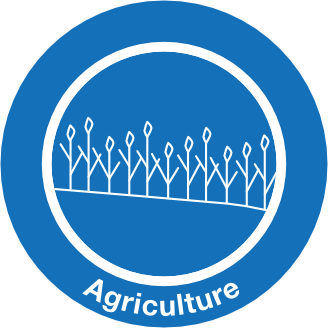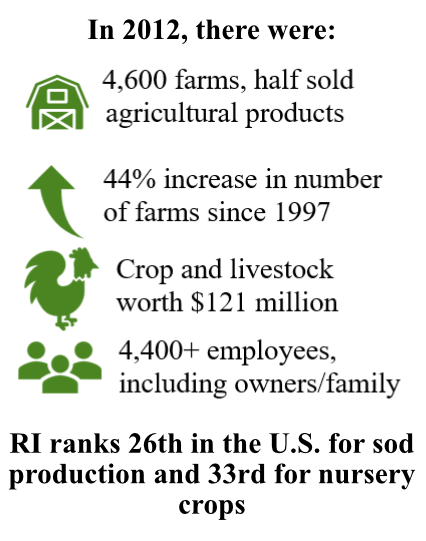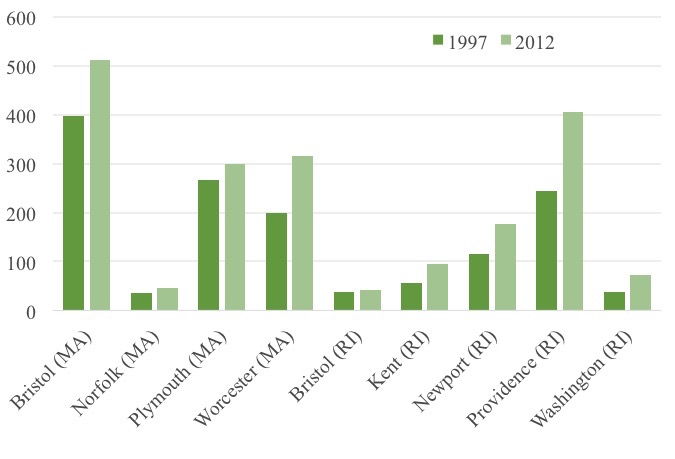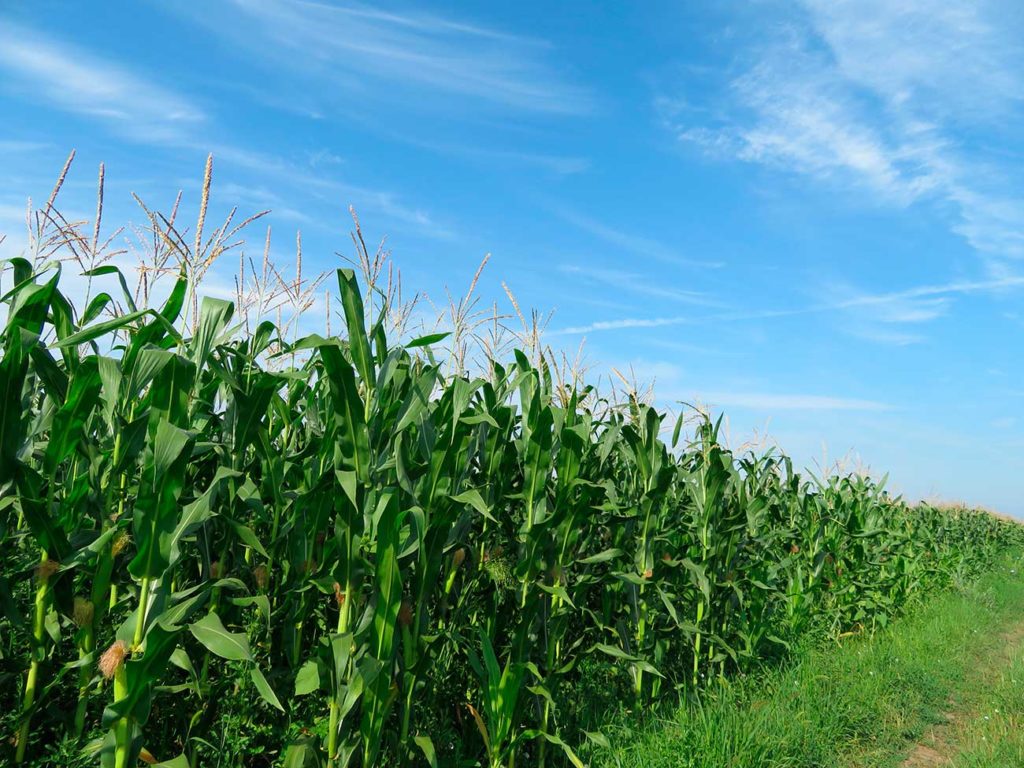

Recent Trends
Despite declines over the past century, agriculture continues to be an important and growing contributor to the economy of the NBW. According to the US Department of Agriculture (USDA):
- Crop production dominates agricultural sector in the NBW: of 2000 farms selling agricultural products in 2012, a majority (1,176) of these farms were in MA, while 791 were in RI. MA also had more farmland—approximately 70,000 acres—while RI had about 14,000 acres. These farms produced goods, both crops and livestock, with a combined market value of $121 million in 2012 (2016 dollars). Crops comprised a majority of this value compared to livestock, which only accounted for 19% of market value in RI and 16% in MA.
- The number of farms is increasing: from 1997 to 2012, the number of farms increased by 44% to an estimated 4,600 farms (see graph). Despite this increase, however, the total acreage of agricultural land has remained relatively the same at ~28,000 acres.
- Employment in farms is growing: farms employed over 4,400 people in the watershed (1,700 in RI and 2,700 in MA). Of this 4,400, 1,700 were proprietors and 2,700 were classified as other employees. Although farming remains a small percentage of total employment in the watershed, it is growing rapidly: between 2001 and 2015, farming employment in RI increased at three times the growth rate of total employment in the state.
- These estimates of the impact of agriculture may be underestimates: a state-level study in 2015 found that USDA figures were underestimates of the scope of agriculture in RI. They found that 4,500 people worked in the agricultural sector, 2.6 times higher than the USDA’s reported employment of 1,700. They also found that agricultural sales were $239 million, four times higher than what USDA reported. Under this assumption, the market value of agricultural products in RI would be $142 million and $321 in MA in 2012 based on the adjusted previously stated USDA figures.

Future Outlook
Urbanization and suburbanization potentially threaten the future of agriculture by reducing available land for farming: from 2001 to 2011, there was an 8.5% increase in urban land in the NBW. For example, cranberry farming (a significant portion of agricultural activity in the MA portion of the watershed) is experiencing considerable development pressure. More recently, open spaces such as farmland are under pressure as targets for renewable energy projects like large solar farms. The greatest threats and opportunities to agriculture may arise from the effects of climate change. Average summer air temperature is expected to increase 7° F in the next century. This change would make the climate of the NBW akin to that of modern-day Georgia or South Carolina. Additionally, precipitation, especially rainfall, is expected to increase up to three inches during this time. This warmer climate and increased rainfall may provide challenges for current agricultural practices in the NBW, but also new opportunities, such as the introduction of different crops.
Read the full agriculture chapter

